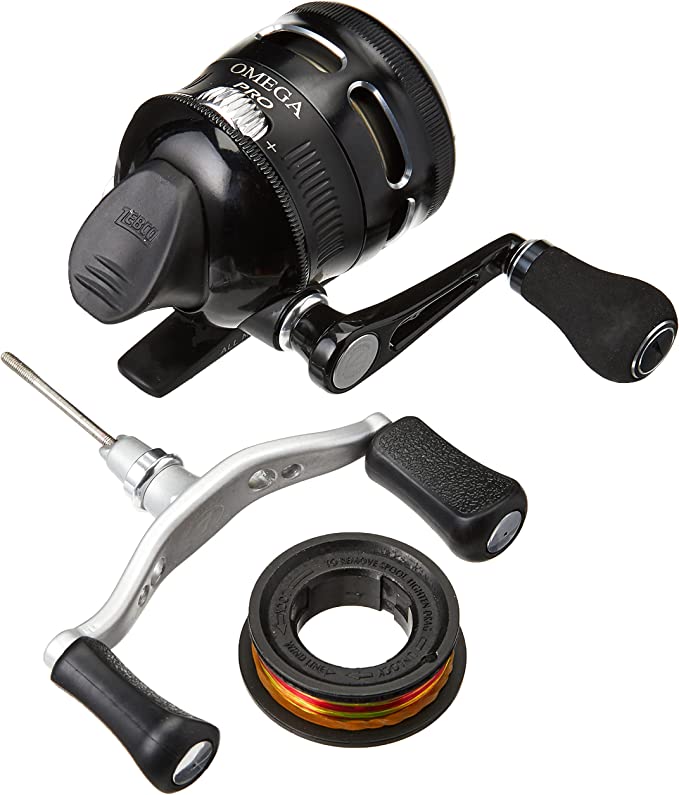Beyond the Beam: The Engineering Behind 55,000 Lumen Searchlights
Update on Nov. 19, 2025, 7:30 p.m.
In the world of portable illumination, there exists a threshold where a tool ceases to be a mere “flashlight” and becomes something far more potent: a handheld searchlight. We are seeing a surge in devices claiming astronomical output figures—30,000, 50,000, even 100,000 lumens. For the uninitiated, these numbers can seem abstract, or even hyperbolic. However, for professionals in search and rescue, maritime navigation, or large-scale property management, this level of output is a transformative capability.
But harnessing the power of a portable sun requires overcoming significant laws of physics. It is not simply about packing more batteries into a tube; it is a complex engineering challenge involving thermal dynamics, optical precision, and energy density. The IMALENT SR16 serves as a compelling case study in how modern engineering tackles these challenges to deliver 55,000 lumens in a package you can carry with one hand.
The Photon Engine: Understanding High-Intensity LED Arrays
The heart of any high-performance light is its emitter. To achieve extreme output, engineers must choose between a single, massive LED (which is hard to cool and focus) or an array of smaller, high-efficiency chips.
The SR16 utilizes a cluster of 16 Cree XHP50.3 HI LEDs. The choice of the “HI” (High Intensity) variant is crucial here. Unlike standard LEDs that have a silicone dome to spread light (good for room lighting), HI LEDs are “dedomed” or flat. This flat surface allows for a higher surface brightness and makes the light easier to collimate (focus) into a tight beam.

By arraying 16 of these emitters, the device creates a “wall of light.” However, the arrangement is not just about raw power; it is about beam profile. A single emitter might give you a pencil beam (throw) or a wide wash (flood). A multi-emitter array like this, combined with a precision smooth reflector, attempts to achieve the “Holy Grail” of lighting: balanced extreme output. It provides a massive flood of light to illuminate a wide area (like a football field) while simultaneously generating a hotspot intense enough to reach distances of 1,715 meters. This dual capability is vital for search and rescue operations where situational awareness (seeing the periphery) is just as important as spotting a distant target.
Thermodynamics: The Battle Against Heat
The biggest limiting factor in high-lumen flashlights is not battery power, but heat. LEDs are efficient, but converting 100+ watts of electrical energy into light still generates a tremendous amount of thermal waste. In a sealed metal tube, this heat has nowhere to go, leading to rapid overheating and performance throttling.
This is where standard passive cooling (just aluminum fins) fails. To sustain high outputs, the SR16 integrates an active cooling system. Built-in fans are engaged to mechanically force air across the internal heatsinks. This is a feature borrowed from high-end computing and industrial electronics, adapted for handheld use.

For the user, this means the difference between a light that steps down from 55,000 lumens to 2,000 lumens in 10 seconds, versus one that can sustain higher functional brightness (like 11,000 or 23,000 lumens) for usable periods. It transforms the device from a “burst” toy into a sustained working tool. However, users must understand the physics: Turbo mode is temporary. Even with fans, the laws of thermodynamics dictate that 55,000 lumens generates heat faster than a handheld device can dissipate it indefinitely. The active cooling extends the usability window, but it does not defeat physics.
Energy Density and Power Delivery
Driving 16 high-power LEDs requires a massive current draw. Standard alkaline batteries would be drained in seconds, if they could even deliver the current (they can’t). High-performance searchlights rely on Lithium-Ion battery packs, typically built from 21700 cells. These cells offer the best balance of energy density (capacity) and discharge rate (amperage).
The integration of the battery pack into the handle of the SR16 is a strategic design choice. It balances the weight of the heavy LED head, improving ergonomics. For long-duration searches, the ability to recharge via a barrel plug (rather than swapping individual cells in the field) suggests a design philosophy oriented towards vehicle-based or base-camp operations, where the light is a primary tool rather than a backup.
Practical Applications: When is 55,000 Lumens Necessary?
For walking the dog, 500 lumens is sufficient. So, who needs 55,000?
- Search and Rescue (SAR): In mountain or maritime rescue, a wide, intense beam allows teams to scan vast swathes of terrain quickly. The “wall of light” ensures that nothing is missed in the peripheral vision.
- Maritime Navigation: Identifying buoys, markers, or debris in the water at night requires a beam that can cut through atmospheric moisture. The sheer intensity (candela) of the SR16 helps punch through light fog or mist.
- Security and Perimeter Check: For large estates or industrial facilities, the ability to instantly illuminate a fenceline 500 meters away acts as both a detection tool and a deterrent.

Conclusion: A Tool for the Extremes
The IMALENT SR16 represents the apex of current portable lighting technology. It is not a casual flashlight; it is a specialized instrument that leverages advanced LED technology and active thermal management to deliver performance that was arguably impossible in a handheld format just a decade ago.
For the professional or the enthusiast who demands the absolute maximum capability, understanding the engineering behind the beam—the relationship between heat, power, and light—is key to utilizing such a powerful tool effectively. It stands as a testament to how far we have come in our ability to banish the dark.























